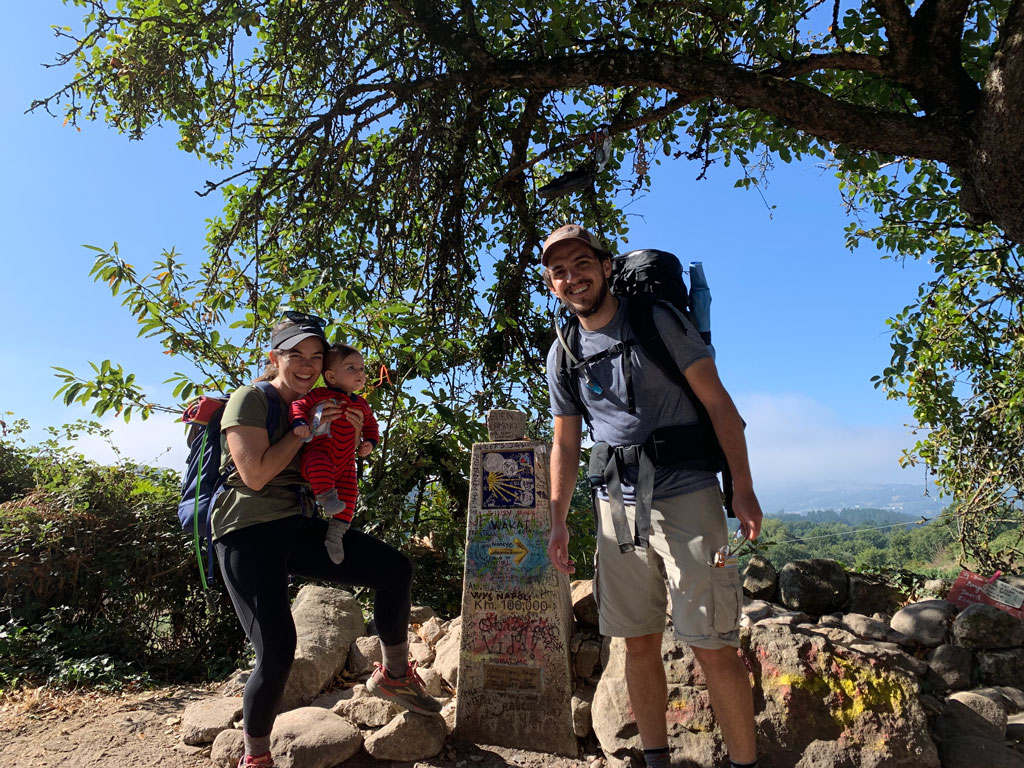A version of this story appeared in the summer 2020 issue of Uncommon Path.
Ever since they met while studying abroad, REI members Pablo and Rachel Muldoon talked about trekking the Camino de Santiago, a network of trails established by religious pilgrims in the Middle Ages. Of the many routes—all leading to the saint’s purported tomb at Santiago de Compostela in northern Spain—the most popular is the Camino Francés, a 500-mile jaunt over the Pyrenees through vineyards, villages and the ruins of ancient monasteries. “It sounded like a fun, romantic journey,” Rachel says. Then they found out they were expecting their first child.
Early in her pregnancy, during a text exchange about possible baby names, Rachel wrote that if they named him Santiago, they should walk the Camino with him. “I thought Pablo was going to say, ‘That’s insane,’” she says. Instead, he replied, “Absolutely.”
At home in Chicago, they trained for three weeks for their first extended thru-hike. “I was walking around with this enormous 70-liter Osprey backpack, pushing a baby and looking ridiculous,” Pablo says, laughing. Certain equipment—like the backpack Pablo borrowed from a friend and had fitted for free at REI—is standard on the Camino. But the Muldoons also had to account for baby gear, which, as many parents know, can add up quickly.
Deciding what to pack and what to leave behind proved challenging. “There are not a lot of resources online for parents who want to do [the Camino] with children,” Pablo says. So they sought out friends and family members who had completed the hike and asked for advice, including whether or not they should bring their Thule Urban Glide 2 Stroller. On the one hand, the couple argued, it would give their son a reprieve from being carried in a pack. On the other hand, the terrain in Spain—rocky and with far more hills than what they were accustomed to in the Midwest—would make navigating with a stroller more difficult. Ultimately, it made the list, along with a travel crib and REI Co-op packing cubes, which helped them stay organized.
Five months after Santiago was born, the Muldoons flew to Spain, where, despite their preparations, doubt crept in. Rachel wrote in her journal, “We start tomorrow. I’m already sore. I have a blister. I don’t know how this is going to go.”

They spent the next 14 days navigating the trail and their new role as parents. Once, they opted for what they thought was a shorter route only to be met with a steep incline that took hours to conquer. On day six, a rock punctured their stroller’s tire, stranding them in a rural area. Help came in the form of three Spaniards and a patch made from a blister bandage.
“When Santi would cry, I would feel self-conscious and worry people thought we were being irresponsible for taking him on this crazy journey,” Rachel says. At one point, she apologized to a fellow pilgrim, only to be reassured. “She said, ‘If you were home, he’d be crying at home.’”
Along the way, the Muldoons learned to let go—of unnecessary gear, of their pride and of preconceived notions. “I had a fear that, once we became parents, the adventures would end,” Pablo says. “I think we did this pretty extreme adventure to subconsciously prove to ourselves that, in fact, the adventure is just beginning.”
The Camino de Santiago By the Numbers
9: Number of routes officially recognized as part of the Camino de Santiago network
482 miles: The length of the most popular route, the Camino Francés or “French Way”
251,281: Average number of pilgrims who complete the trail each year
347,578: Number of pilgrims who completed the trail in 2019
11–15: Average number of miles walked per day
4–6 weeks: Average amount of time it takes to complete the full Camino Francés
